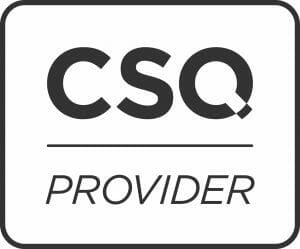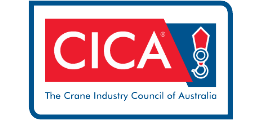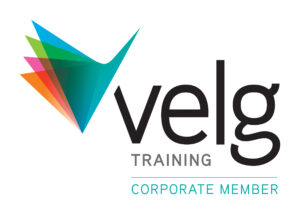About this Course
Course Description:
This course specifies the outcomes required to perform basic rigging work associated with movement of plant and equipment, steel erections, hoists (including mast climbing hoists), placement of pre-cast concrete, safety nets and static lines, perimeter safety screens and shutters; and cantilever crane loading platforms for licensing purposes.
This comprehensive 5-day course covers the skills and knowledge needed to obtain a Basic Rigging Licence (CPCCLRG3001 – Licence to Perform Rigging Basic Level). However, you must hold a current HRW DG Licence CPCCLDG3001 Licence to Perform Dogging to enrol in the course.
Upon successful completion of the course, you’ll be certified to perform basic rigging work including:
- Lifting and moving heavy objects (steel beams, precast concrete and panels, heavy machinery and equipment etc) using chains, ropes, and lifting equipment
- Construction site set up (installing and dismantling safety barriers, scaffolding, nets, and other safety equipment to protect workers and the public)
- Hoist operation, including mast climbing hoists for lifting personnel and equipment
Basic Course Requirements
All course participants must be:
- 18 years or older
- Able to read, understand, and write English
- Able to produce and meet the evidence of identity criteria as per SafeWork / Worksafe identification requirements
Protective Personal Equipment – safety boots, high-visibility vests, and hard hats – are mandatory.
If a participant requires a reassessment for a High-Risk Work Licence an additional $250.00 + GST reassessment fee will apply.
Location:
Public courses run at Kallibr Training (RTO 32365) locations in Sydney and Brisbane.
Course Outline
- Day 1: Safety Fundamentals and Regulatory Overview
- Days 2 – 4: Practical Rigging Operation and Skills Building
- Day 5: Basic Rigging Licence Course Licence Assessment
- Available at Ingleburn (NSW) and Salisbury (QLD)
- Onsite training available
- Nationally recognised
- Group discounts available
- Online booking available
Over the 5 days of the course, participants will cover the fundamentals of basic rigging operation, including safety and regulatory considerations, and develop safe, efficient rigging skills.
Other Rigging Courses
Course Availability & Pricing
Please see our public course dates below. If there are no dates available or you would like to arrange a private course at your site or ours, then please select the ‘Private courses’ button.
Course Outcomes
Learning Outcome
On completion of the course, participants will have gained the following skills and knowledge to:
- Plan Operations: Hazard management and consultation
- Equipment: Selecting and inspection of appropriate lifting equipment for operations
- Prepare: Site and lifting equipment for operations
- Transfer Loads: Rigging loads and directing crane movements
- Conclude Operations: Shut down and pack up equipment following site specific procedures
Outcome
A nationally recognised Statement of Attainment CPCCLRG3001 – Licence to perform rigging basic level.
High-Risk Work Licence (class RB) will be issued through the WHS authority in your jurisdiction. (SafeWork/WorkSafe)
Further Information
Why Get Your Basic Rigging Licence?
A basic rigging licence is compulsory for carrying out any type of basic rigging activity on all Australian work sites. It is also a pre-requisite for obtaining an intermediate rigging licence.
A rigging licence also opens doors to careers in a range of industries where there is a requirement for lifting and moving heavy loads, which may in turn lead to higher earning potential and opportunities for promotion.
Career Pathways in Rigging
If you’re considering a career in the rigging industry, you can count on hands-on work experience and numerous employment opportunities in manufacturing, mining, logistics, construction and a wide range of other industries.
As a rigger, you’ll work with machinery and equipment to move heavy loads, materials, and supplies.
What does rigging involve?
Rigging refers to securing, moving, and setting down a load using the right mechanical equipment.
A rigger’s primary function involves lifting, moving, and placing heavy or oversized loads, equipment, or machinery. They use machinery such as winch systems and chain blocks or equipment such as:
- Trucks
- Hydraulic jacks
- Dollies
- Pulleys, and
- Cranes to move loads
You’ll need a comprehensive understanding of factors surrounding load movement and safety procedures before, during, and after the process.
What are the tasks and responsibilities of a rigger?
Rigging work covers multiple sectors, but the tasks are often similar. They include:
- Equipment Selection
Riggers select the appropriate equipment depending on the specific task and inspect it to ensure safety and proper functionality. This requires evaluating loads depending on the size, weight, and shape to determine the best lifting method.
- Inspection and Testing of Machinery and Equipment
A crucial part of rigging work is conducting tests and inspections on the rigging hardware and equipment for safety purposes.
- Operating Rigging Equipment
A rigger attaches sling equipment on a load, operates machinery such as pulleys once the load is secure, and moves it to the preferred location.
- Building Temporary Structures
Riggers are responsible for setting up cranes and booms, and they help to adjust the height on tower cranes. When building scaffolding, they also help to lift, position and bolt the pre-fabricated parts.
- Compliance with Occupational Health & Safety (OHS) Procedures
A career in rigging calls for a high level of responsibility due to the risk of severe damage or injury. As a rigger, you must know how to safely prepare loads for movement, and also understand how to dismantle any equipment that poses a safety risk.
What licenses do I need for rigging work?
In Australia, riggers need a license or certification to work. If you’re starting out in the industry, you’ll need to attend the industry-standard course called CPCCLDG3001 Licence to perform Rigging Basic Level (RB) at a registered training organisation (RTO) such as Kallibr Training (RTO 32365) to get the license.
The course covers basic rigging tasks, and there is a pathway to further learning with our intermediate and advanced training courses.
The basic course covers:
- Dogging work
- Structural steel erection
- Particular hoists
- Placement of precast concrete members
- Rigging safety nets and static lines
- Mast climbers
- Perimeter safety screens and shutters
- Cantilevered crane loading platforms
Note that the dogging course is a prerequisite for Basic Rigging.
How long is the rigging course?
Most people studying rigging have previous background or experience that helps fast track the training process. The course itself runs for 5 days, at our Sydney, Melbourne or Brisbane training centres.
The best part is that you can also study while gaining the right hands-on experience from work – most employers are willing to accommodate ambitious employees through traineeships.
How do I get a licence?
After completing the training course, the next step is to pass an assessment that demonstrates your ability to perform rigging tasks safely.
Once you’ve successfully passed the assessment, you can apply to get your high-risk work license from your local WHS authority.
Starting with a basic rigging course jump-starts your career since you can advance your education level over time, adding on intermediate and advanced skills as you move up the ranks in your job. You’ll be well-experienced to switch to a different industry or a better, more complex role.
Why Choose Kallibr Training in NSW & QLD?
Our High Risk Work Licence (class RB) course prepares you for real-world rigging situations involving most common types of rigging and loads.
As an industry leader in rigging training, Kallibr Training makes sure you have the right skills and knowledge to safely plan, execute, and wind up basic rigging activities. From planning, selecting, inspecting, preparing, operating, and packing up… These skills are also transferable across industries.
Unique Rigging Training Methods
With purpose-built facilities like designated height structures and modern equipment, we offer unique rigger training that mimics a wide range of real-life rigging situations. Our students also have access to additional practice time should it be required.
Experienced Course Instructors
Our experienced rigging instructors are highly skilled professionals with years of industry experience across many different sectors – army, fire and rescue, mining, civil and major construction, crane yards etc. This allows them to draw on personal experiences to provide real examples and case studies.
Advanced Modern Equipment
Our purpose-built training facilities in Sydney and Brisbane have a wide range of modern full-sized structures and rigging equipment, including Telex, Tadano, and dual hoist cranes, winches, Preston counter levered crane-loading platforms, and lifting gear. This ensures our students are trained and gain experience on industry-standard equipment.
Real-World Applications
We provide custom-made facilities and structures designed to replicate real-world work environments. Our instructors are also experienced riggers, capable of bringing personal experience to the table. Combined, this ensures our students can step straight into any workplace environment with ease and confidence, and with skills and training that are directly transferable across industries.
Certification and Ongoing Support
Upon successful completion of the Basic Rigging Licence course, students receive a nationally recognised Statement of Attainment in CPCCLRG3001 so they can obtain their Rigging basic ticket.
Basic rigging tickets need to be renewed every 5 years in Australia. If done within 12 months of expiry date, you usually don’t have to redo the applicable training and assessment courses for endorsements already held.
However, you should be prepared to undertake regular refresher courses to keep up to date with current safety and workplace legislation and practises. Our refresher courses are designed to provide this, and reinforce safe operating techniques!
Flexible Training Options
Sometimes industry training is not ‘one-size fits all’ and our public courses or availability don’t suit.
We do offer a range of private options so talk to us about your specific training requirements and we’ll do our best to accommodate them!
Book your CPCCLRG3001 – Licence to Perform Rigging Basic Level Course
Contact us to discuss your training requirements or to book your basic rigging course with us today.




